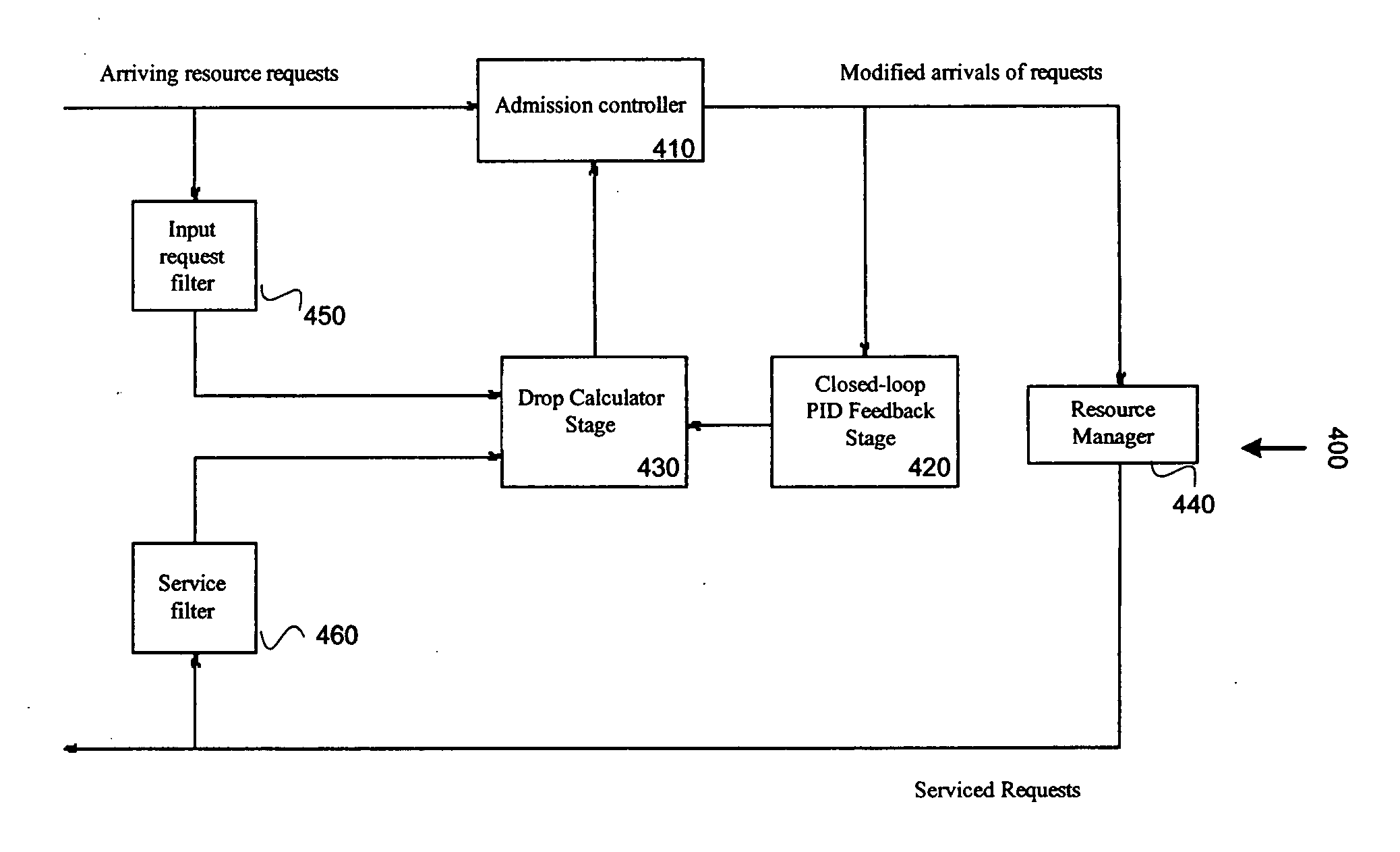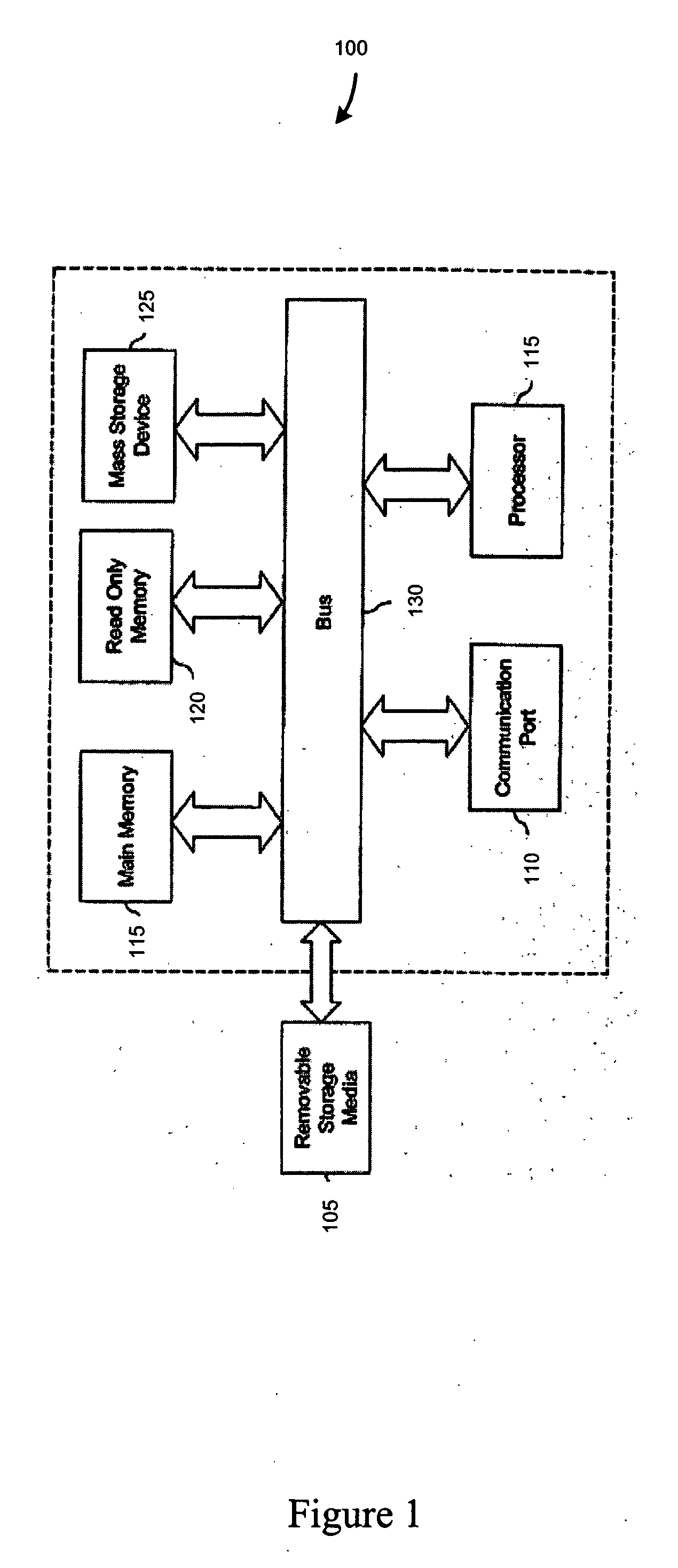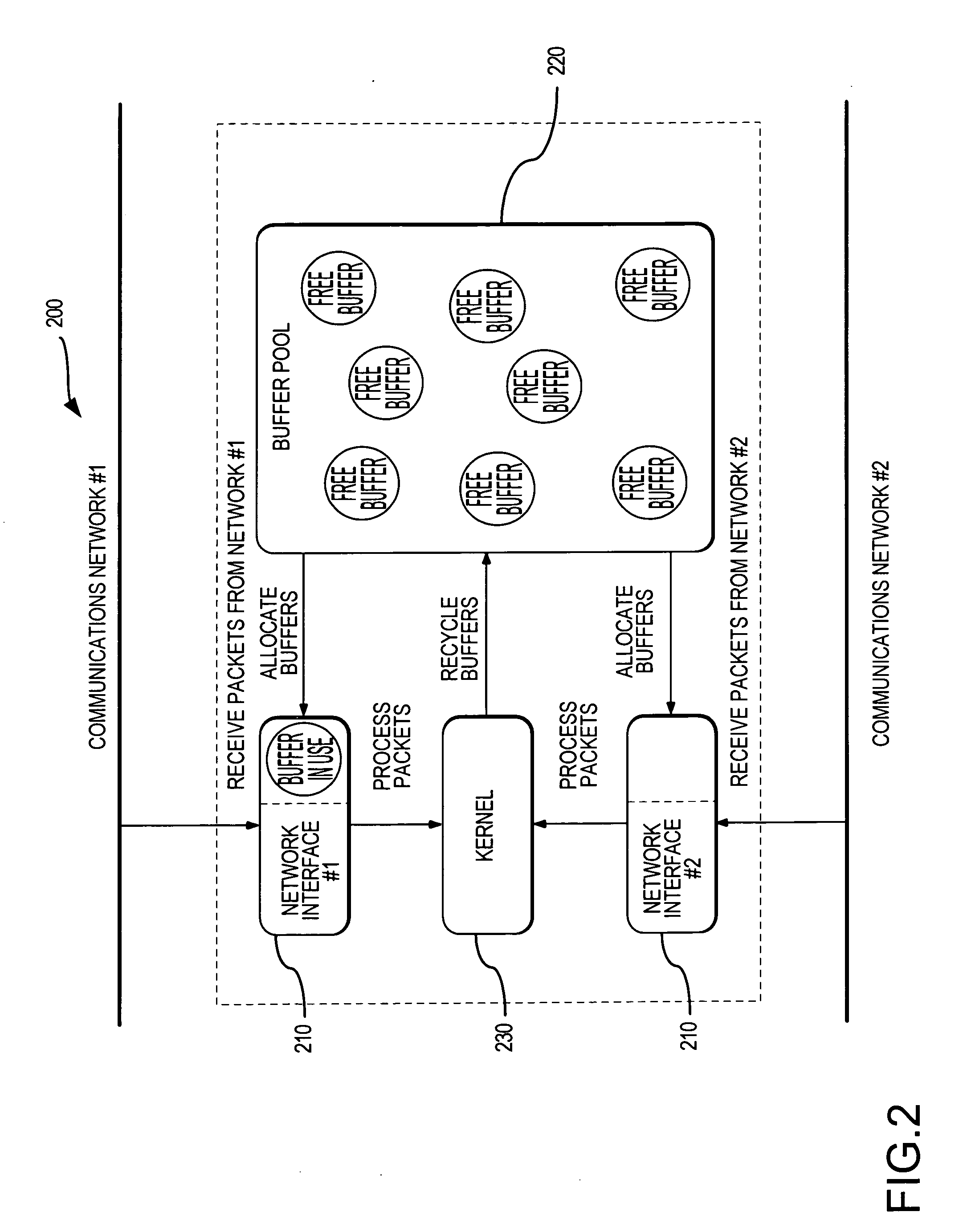Nonlinear adaptive control of resource-distribution dynamics
a resource-distribution and dynamic technology, applied in frequency-division multiplex, data switching networks, instruments, etc., can solve problems such as single point failure, bringing down an entire computer network, and overwhelming, and achieve the effect of improving controller performan
- Summary
- Abstract
- Description
- Claims
- Application Information
AI Technical Summary
Benefits of technology
Problems solved by technology
Method used
Image
Examples
Embodiment Construction
[0030] Nonlinear adaptive resource management systems and methods are described. Broadly stated, embodiments of the present invention seek to facilitate the development of reliable systems with predictable behavior. According to one embodiment, an adaptive, nonlinear, model-reference controller seeks to prevent failures that result from high demand on limited resources, in software systems, for example, by building a model of resource usage and subsequently reducing demand on resources by selectively denying resource requests based upon the model. In this manner, service may be degraded smoothly, in a controlled and principled fashion before the situation becomes dire.
[0031] According to one embodiment, a controller shapes the probability distribution of resource states such that the likelihood of entering a failure regime is zero. This is a fundamental departure from current practices, which rely on Gaussian statistics that collapse the dynamics of the distribution into aggregate ...
PUM
 Login to View More
Login to View More Abstract
Description
Claims
Application Information
 Login to View More
Login to View More - R&D
- Intellectual Property
- Life Sciences
- Materials
- Tech Scout
- Unparalleled Data Quality
- Higher Quality Content
- 60% Fewer Hallucinations
Browse by: Latest US Patents, China's latest patents, Technical Efficacy Thesaurus, Application Domain, Technology Topic, Popular Technical Reports.
© 2025 PatSnap. All rights reserved.Legal|Privacy policy|Modern Slavery Act Transparency Statement|Sitemap|About US| Contact US: help@patsnap.com



